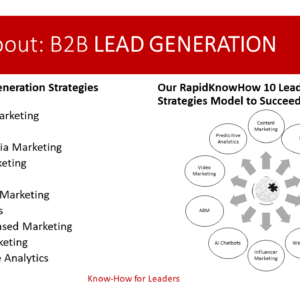An Industrial Gas Leader as a Collaboration Leader is a company that excels in fostering partnerships, alliances, and cooperative strategies within the industrial gas sector and beyond.
This role emphasizes collaboration between various stakeholders, including suppliers, customers, governments, and research institutions, to enhance innovation, improve operational efficiencies, and drive industry standards.
Framing
In the contemporary industrial landscape, collaboration is crucial for addressing complex challenges, such as sustainability, regulatory compliance, and technological advancement.
Key considerations for framing this role include:
- Enhanced Innovation: Collaborating across sectors facilitates knowledge sharing and accelerates the development of new technologies and solutions.
- Shared Resources: Leveraging partnerships can optimize resource use, reduce costs, and enhance service delivery.
- Market Adaptability: A collaborative approach allows organizations to quickly adapt to changing market demands and regulatory landscapes by working together to share insights and best practices.
Re-Framing
To effectively position themselves as collaboration leaders, industrial gas companies can consider the following reframing strategies:
Partnership Ecosystems:
- Shift from viewing collaboration as transactional relationships to building ecosystem partnerships that drive mutual value across industries.
Cross-Industry Alliances:
- Foster collaborations not only within the gas sector but with companies in other industries (e.g., energy, manufacturing, transportation) to address common challenges.
Data and Knowledge Sharing:
- Promote a culture of transparency and information sharing among partners to facilitate better decision-making and innovation.
Strategic Actions
To lead in collaboration, industrial gas organizations can implement the following strategic actions:
Establish Joint Ventures:
- Form joint ventures with other companies to develop new technologies or enter new markets, sharing both risks and rewards.
Innovation Hubs and Research Collaborations:
- Invest in or participate in innovation hubs and research partnerships with educational institutions and industry organizations to drive technological advancements.
Customer Engagement Programs:
- Develop collaborative programs with customers to co-create solutions that meet specific needs, enhancing customer satisfaction and loyalty.
Case Studies
Case Study 1: Air Liquide and Tesla Partnership
- Air Liquide has collaborated with Tesla to provide industrial gases for their battery production. This partnership showcases how collaboration can lead to innovation in sustainable energy and advanced manufacturing processes.
Case Study 2: Linde’s Strategic Alliances with Universities
- Linde has partnered with various universities to foster research and development in the area of carbon capture and utilization, demonstrating a commitment to collaboration that enhances both innovation and environmental stewardship.
Conclusion
To thrive in a competitive landscape, industrial gas organizations must embrace their role as Collaboration Leaders.
By fostering partnerships and cooperative strategies, these companies can drive innovation, respond effectively to market demands, and enhance their operational efficiency.
Collaborative efforts not only create value for the companies involved but also propel the entire industry forward.
Get Started in3 Steps
Identify Key Stakeholders:
- Map out potential partners, including suppliers, customers, educational institutions, and other industry players whose interests align with your organization’s goals.
Develop Collaborative Strategies:
- Create a strategic plan that outlines specific collaboration goals, potential areas for joint innovation, and frameworks for engagement with identified stakeholders.
Initiate Engagement and Communication:
- Reach out to potential partners to explore opportunities for collaboration. Create channels for ongoing communication to ensure alignment and mutual benefits throughout the partnership.
By taking these steps, industrial gas organizations can position themselves as effective collaboration leaders, enhancing their capabilities while contributing positively to the industry’s future.















